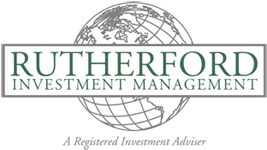
While it is unknown exactly what caused the crash, some people believe that a large, $12 billion sell order in mini S&P futures, entered by a Midwestern brokerage firm, may have been the catalyst.
About 70 percent of the orders on the New York Stock Exchange are now done by computers in what is known as flash or high-frequency trading (I wrote about this previously in an August 2009 column for the Daily Journal of Commerce). When the computers saw this huge trade, they instantly sold and started the crash. The NYSE shifted into “slow mode,” which caused incoming orders to shift to humans (specialists charged with maintaining an orderly market) and to other exchanges. (There are more than fifty other exchanges.)
Both the specialists and the other exchanges were swamped. Floor traders at first thought a large European bank must have failed, but then realized that was not true. But the specialists and the computers did get out of the way. Their action removed liquidity from the system at the very time it was needed, causing the markets to fall further.
Specialists can leave a “stub price” at which they will execute and trade, and many left one penny as their stub. The computers considered that as a “heck of a deal” and bought, so many orders by short sellers, stop-loss orders and market orders were executed at unexpected prices. Many of these orders were later canceled by the exchange.
On May 29, 1962, there was a similar “flash crash.” The market broke without warning, falling 5.7 percent in a single day – the second largest decline on record. The volume was so heavy that floor transactions could not be reported until 5:59 p.m., or two hours and 29 minutes after the market closed. Stocks like IBM plunged in just moments.
According to a report a year later by the Securities and Exchange Commission, “…this break had a strong and immediate psychological impact upon the nation.” The SEC noted a “…general public disenchantment with the market,” and households slashed purchases of stocks. Eight percent of brokers left the business in the year following the crash. It took mutual funds two years to recover their precious levels of investment.
In the current crisis, exchange-traded funds thought to provide safety through diversification, proved to be especially vulnerable. Many trades were executed (and some later canceled) at prices considerably different than expected.
Now, Congress and the SEC have begun investigations into the “flash crash.” I can’t prejudge the decisions of the SEC’s panel, but I am sure that it must take drastic action or this event will certainly happen again. It is worrisome that those attending the hearings are mostly the big financial institutions that profit from the flash trading. The interests of the banks are not the same as individual investors.
About 70 percent of trading on and off the NYSE is program trading done by computers using algorithmic codes. The computers are simply too fast for humans to keep up with. The computers trade in 100 to 200 milliseconds. Wall Street has lobbied Congress and the SEC to allow this so-called flash trading and “dark pools.” The investment houses buy data about pending trades and other information from the exchanges they they are allowed to see before the public. This obviously gives them an advantage. No wonder Goldman Sachs can brag that it made money trading every day last quarter. It knows the cards in the deck and what everyone else is holding before it trades. In any casino, this would be known as an unfair advantage. The exchanges are not supposed to operate like casinos.
Flash trading was sold to the regulators as providing liquidity to the market. However, it also sucks liquidity out of the system, as the May 6 crash illustrated.
Why will it happen again? All the program trading and computers use the same logic. Therefore, when they want to sell, they all want to sell, and when they want to buy, they all want to buy. This adds volatility to the markets – hence, the wide swings that we see more often. It also means, in times of stress, that the chances of an event like the one on May 6 increase.
The solution would be to create a uniform rule across all exchanges to provide a “circuit breaker,” wherein the markets or individual stocks stop trading for a period, perhaps only one minute, to gather its senses.
Regulators and some legislators are questioning whether the markets are still fair, and whether investors have been placed at a permanent disadvantage. Will the SEC provide such a solution? Judging by the aftermath of the crash of 1962, investor reaction will be significant. May 2010 was the worst month for the markets in decades. Perhaps there is a connection between that dismal performance and May 6.
In the meantime, though it may be challenging, don’t panic when these events occur.
